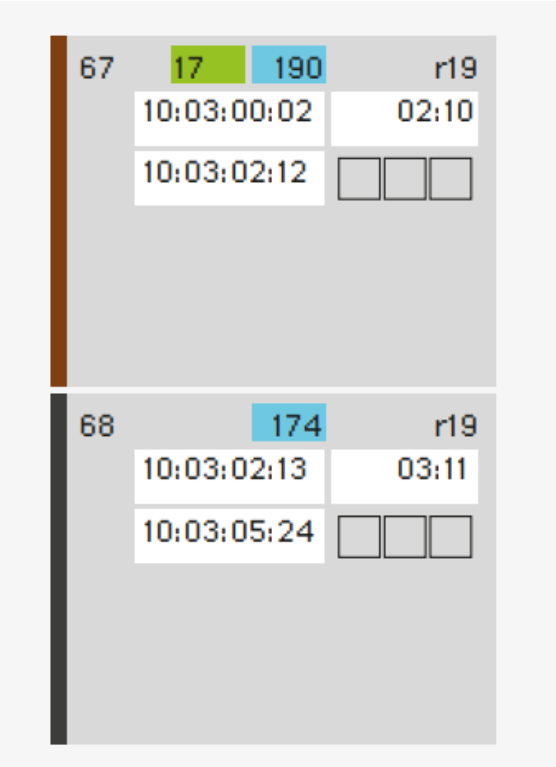Clearcast Subtitling Style Guidance for TV Ads
In this article, you'll find advice on various elements of subtitling and style guide. This is based on broadcaster advice.
You can also download a PDF here for your own collection here.
For more specific advice or for further clarification, please contact subtitles@clearcast.co.uk.
Timing
- Two lines maximum, 36 characters per line
- Personality: Teletext
- Reading rate 250 wpm maximum
- Minimum duration subtitle: 1 second
- Time to shot change where possible
- No gaps between successive subtitles of less than a second. Close any existing gaps of less than a second up.
- There should be a one-frame gap between all contiguous subtitles. If you consider the timecodes of the successive subtitles below, you can see the 'in' timecode of subtitle 68 does not match the 'out' timecode of subtitle 67, but rather follows one frame later.

Placement
Be consistent with placement of the subtitles – consider staying on the same line, but moving to the right or left of the screen to avoid obscuring vital visuals. The below must never be obscured when deciding where to position subtitles:
- Product name
- Visuals of product
- Terms and conditions / legal disclaimers
Speaker Identification
- Use colour to identify different speakers. Keep the colour consistent throughout. Limit to white, yellow, cyan, green, in that order.
- Use identifiers when needed. They should be capitalised and white, irrespective of the colour of speaker. They are only needed if it’s not obvious who the speaker is.
Voice-Overs
- Use single quotes at the start of each subtitle containing voice-over. Use an end quote mark when voice-over ends.
- An identifier can also be used. If the speaker is known, e.g. someone famous, we can include their name. It should be capitalised, all white and followed by a colon.
Sound Labels
- All caps, always white, using a pronoun where appropriate
- Left justified and left aligned where possible – place according to placement guidelines
- Only use them to describe a sound, not an action.
- Only label things that are necessary for the viewer’s understanding of events on screen, or to illustrate atmosphere.
Music & Lyrics
Label music and artists as below – left justified and left aligned where placing allows.
Only cite the artist if 100% sure it is them.

If there is time to add in lyrics, format as below.
- A hash mark and a capital letter at the start of every line
- No end of line punctuation until the last lyric and complete with end hash mark
- If the song is interrupted, end with ellipsis (...) and hash mark.
- Label any music that is significant to the plot. If someone is playing an instrument, or music is coming from a source and it is relevant, create a sound label for it:

or
Only label mood music if it contributes to the viewer’s understanding of the ad.
Dialogue represented in on-screen graphics
If dialogue appears in the form of an on-screen graphic, it may not need to be subtitled.
- Only omit words from the subtitles if the on-screen graphic is very clear.
- If part of the dialogue appears on screen, you can just subtitle the non-visible words. Place the text immediately above or below the graphic depending on whether the graphic starts or completes the sentence or phrase.
- If the on-screen visuals are only missing one or two words that aren’t needed for the understanding of the sentence, it may create a better viewer experience to leave them out, and simply go with what’s on screen.
- It may make more sense to subtitle all of the words, even if this duplicates some text on screen. This should be assessed on a case-by-case basis.


